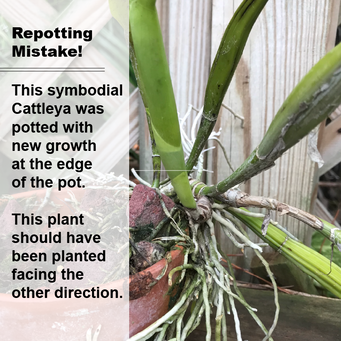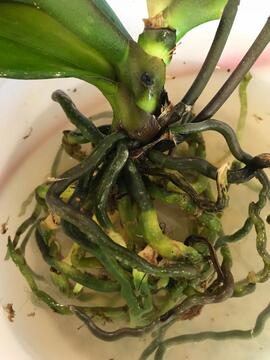|
Better-GroOrchidBlog
 Tip #1 To Center or Not to Center? Knowing if your plant is monopodial or sympodial will help you determine where to place your plant in the new pot. Monopodials such as Phalaenopsis and Vandas grow upwards from the center of the plant whereas sympodial plants like Cattleyas, Oncidiums and Dendrobiums grow sideways. Plant your mono plants in the middle of your pot. For sympodials, determine the direction of your plant’s new growth and place the old growth at the back edge of your pot. This simple trick will prevent tipsy, one-sided plants and will allow your plant to grow bigger and fuller before you repot again.  Tip #2 A Good Soaking Repotting can be stressful for your plants, so give them a boost with a good soak. If your plant is in healthy condition, mix a small amount of plant foodwith water according to the manufacturer’s instructions. Soak your bare-rooted orchid in this solution for approximately 15 minutes before you repot to help generate new root growth. If your orchid is sickly, you may want to try soaking your bare-rooted plant in a fungicide before repotting. This extra step will help give your sick plant a chance at survival. If you are repotting multiple plants, use fresh soaking baths between plants to avoid possible cross-contamination.
Comments are closed.
|
Resources
|
Company |
|
